Resources
Arc Flash Articles
Labeling Practices for Power Generation Facilities
The power generation sector faces distinctive challenges, with hazards ranging from electrocution to arc flashes. Despite these risks, it remains one of the safer sectors due to stringent safety measures and regulations. Power facilities also incorporate redundancies to prevent outages, emphasizing the need for clear communication through labels, signs, and visual tools. …
Floor Marking for Electrical Panel Compliance
Meet OSHA requirements for electrical panel clearance with floor markings! Creative Safety Supply offers a wide selection of floor signs and floor tapes for breaker panels. …
National Electrical Code (NEC)
The National Electrical Code (NEC) is the ANSI/NFPA-approved standard for safe electrical installation. The NEC is revised once every three years, with the most recent changes in 2017. …
Arc Flash Label Requirements [2018 Updates]
Arc flash hazard labels must be placed on any piece of electrical equipment where workers might need to perform work while the equipment is still energized. …
Electric Arc [Definition, Applications & Arc Flash]
Electrical arcs can be a serious hazard when not intended. When an electric arc is created in an uncontrolled environment, such as an arc flash, serious injury or death can occur. Learn more... …
NFPA 70E [Workplace Electrical Safety]
NFPA 70E was created to help prevent injuries to workers in energized environments. If you’re working with live energy, you need to know this safety standard to stay OSHA compliant. …
What is a thermal printer? (direct transfer)
Thermal printers are essential to printing in an industrial setting. Learn about the two types of thermal printing to determine which one suits your facility’s needs. …
Arc Flash Labeling (Updated)
Arc Flashes are one of the most dangerous accidents that can happen in a facility. Learn how to keep your facility safe and incident-free through proper labeling. …
Arc Flash and Electrical Safety
Learn how arc flash works and how it relates to your larger electrical safety program. …
Arc Flash PPE
Make sure everyone knows what protective equipment they need to work near this serious hazard. …
10 Essential Steps for Electrical Safety
Follow these 10 steps to protect people and property from electrical hazards. …
Arc Flash Software helps improve Arc Flash Safety
A review of common software programs that will help you reduce arc flash hazards. …
Arc Flash [Facts, Safety Requirements & PPE]
Arc flash can cause serious damage to people and property. Learn how arc flash works and how you can prevent it. …
Arc Flash Questions and Answers
What are some Real-Life Examples of Arc Flash Incidents
Arc flash incidents involve the sudden release of energy in an electrical arc, creating a violent explosion which radiates intense heat and light. They are life-threatening accidents which emphasize the need for thorough health and safety protocols and sufficient training for employees working in potentially hazardous environments. In this article, we discuss real-life examples of… …
What is an electrical arc?
An electrical arc is when electricity flows between two points, or electrodes. The electricity travels through the air, creating a bright light and high levels of heat. In many cases, creating an electrical arc is intentional and very useful. In other situations, however, an electrical arc can be very dangerous. Learning more about what an… …
What causes electrical arcing?
Electrical arcing occurs when a discharge of electricity is produced during an electrical breakdown of gases within the air. This discharge is continuous rather than momentary, which is what separates an electrical arc from an electric spark. The current’s intended path becomes disrupted, and it will instead travel between two points, either from one conductor… …
What is the difference between an arc flash and an arc blast?
Electrical injuries can be some of the most severe in the workplace. Of those electrical injuries, over 75% of them are caused by arc flashes. An arc flash can cause deadly electrocution and other types of injuries. Along with many powerful arc flashes, however, comes with an arc blast, which can greatly increase the hazards… …
Who is at risk of an arc flash?
Arc flashes are widely understood to be one of the most dangerous events that can happen in the workplace. Safety managers and employees who work around electrical systems both know that an arc flash can cause life threatening injuries to those who are working in the area. The fact is, however, that an arc flash… …
Is arc flash analysis required by OSHA?
Complying with all OSHA requirements is essential for the success of any manufacturing, warehousing, or other company. Not only will this help to avoid any fines or penalties, but it will also help to ensure your employees and facility are as safe as possible. Unfortunately, OSHA’s requirements aren’t always as clear as they could be.… …
What organizations enforce arc flash standards?
Arc flashes are one of the most dangerous events that can occur in the workplace. This is why all employers need to take arc flash training and safety very seriously. In addition to simply wanting to keep everyone safe, it is also encouraged by both the NFPA and OSHA. Many people are surprised to learn… …
Who needs arc flash training?
When working toward a safer workplace, arc flash safety training is an important addition to any environment. When deciding who needs arc flash training in your facility, there are a number of factors that need to be considered. The simple answer is to say that anyone who works with electrical equipment, or works in an… …
What is arc flash labeling?
The best way to help keep people from getting injured or killed due to an arc flash is to keep them informed of the dangers. When people are aware of the risk of an arc flash in a given area, they are much more likely to take the necessary precautions. This would include staying out… …
How can I mark off arc flash boundaries?
When working on minimizing the risk of an arc flash in your facility, one of the first things you should do is take arc flash measurements. These measurements will identify how far away from the source of an arc flash one must be before the risk is no longer life threatening. According to the National… …
How do I determine arc flash boundaries?
An arc flash boundary is the distance from the equipment in question to the point where the energy that would be present in an arc flash is 1.2 cal/cm2. This is the level at which it will cause only second-degree burns rather than third-degree. Calculating where the boundary will be in any given situation is… …
What is an arc flash boundary?
Arc flashes are dangerous events that can impact an entire facility. They are most dangerous, however, for those who are in the immediate vicinity of where the fault occurs. Anyone in the area is going to be exposed to extremely high temperatures, which can cause serious burns very quickly. Of course, anyone who comes into… …
Are arc flash labels required?
One of the best ways to keep people safe from the threat of an arc flash is to ensure they aren’t in the area should one occur. Or, if they must be in the area, that they are wearing the proper personal protection equipment. In order to do that, OSHA requires that employers use arc… …
What is an arc flash rating?
When working in areas where an arc flash is possible, it is important to know what the risk is, and how to best protect those in the area. To help with this, NFPA 70E has come up with Hazard Risk Categories (HRC) based on different duties in the workplace. These ratings are given to different… …
At what voltage can an arc flash occur?
How much voltage is required for an arc flash to occur is a very common question, but the answer isn’t always as simple as one would like. In general, arc faults only occur in systems that are 120 volts or higher, but that is not a hard rule. If the conductors are very close together,… …
Where do arc flashes occur?
An arc flash is a very dangerous event that can cause explosions, fires, and electrocution. These potentially deadly events need to be prepared for so that they can be prevented when possible, and the damage and injuries they cause can be minimized. In order to best prepare for an arc flash of any kind, you… …
How do I prevent an arc flash from happening?
Whenever working with high voltage systems, it is important to do everything possible to avoid an arc flash. Given the fact that arc flashes are among the most deadly types of incident that can occur, all facilities should have a set plan of action on how to prevent them from happening. The following should all… …
How do I complete an arc flash hazard analysis?
Arc flashes are among the most dangerous hazards in the workplace. They can occur in far less than a second, are unpredictable, and can be deadly. For this reason, all employers need to make sure that their systems are kept in proper working order, and know how to identify when there is an elevated risk… …
What are different ratings of arc flash PPE?
When buying arc flash personal protective equipment, you will find that each item is rated differently. The ratings are based on how much protection they are able to provide. Tests are performed on the fabric or other material using a variety of different methods to see whether they can safely protect employees who use the… …
What types of PPE are there for arc flash protection?
Arc flashes are very dangerous and all facilities should take active steps to prevent them from occurring. No matter how careful a company is, however, it is impossible to eliminate all risk of an arc flash from occurring. In addition, there are times when someone needs to work an environment where the risk of an… …
How does an arc flash occur?
An arc flash will occur when there is a path of lower resistance exists between the electrical system and some other point than exists within the electrical system. Normally, electrical systems, and especially electrical wires, are well-insulated to make it very difficult for the electricity to pass outside of the system. If the insulation is… …
What is an arc flash?
There are many different hazards present in the workplace, but for many facilities, an arc flash has the potential to be the most dangerous. An arc flash is the arc of light and heat that is produced by electricity traveling through the air between two points. These happen when there is a path of low-impedance… …

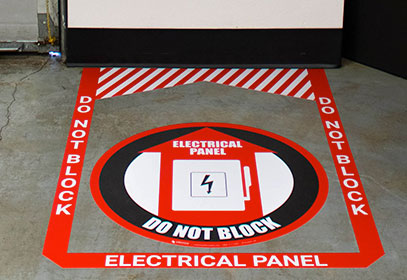
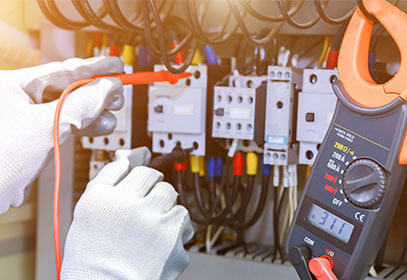
![Arc Flash Label Requirements [2018 Updates]](https://www.creativesafetysupply.com/content/images/articles/arc-flash-labels-th.jpg)
![Electric Arc [Definition, Applications & Arc Flash]](https://www.creativesafetysupply.com/content/images/articles/electrical-arc-th.jpg)
![NFPA 70E [Workplace Electrical Safety]](https://www.creativesafetysupply.com/content/images/articles/nfpa-70e-th.jpg)
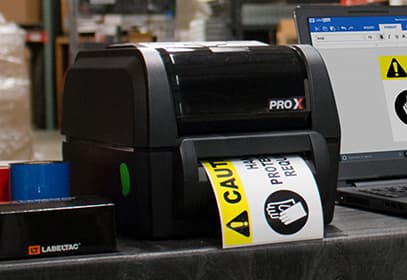
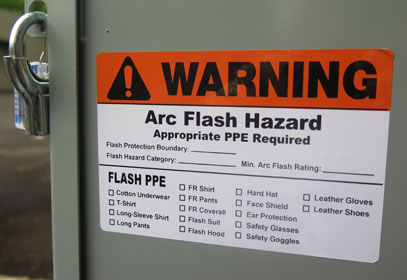
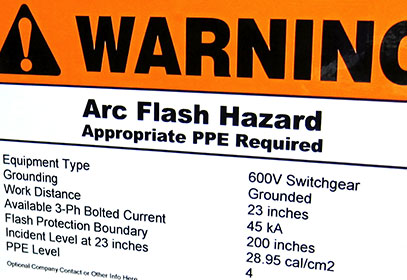


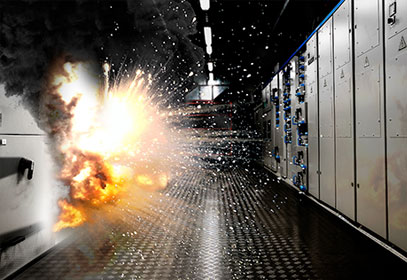
![Arc Flash [Facts, Safety Requirements & PPE]](https://www.creativesafetysupply.com/template/images/custom/safety-articles/articles-arc-flash-facts.jpg)














